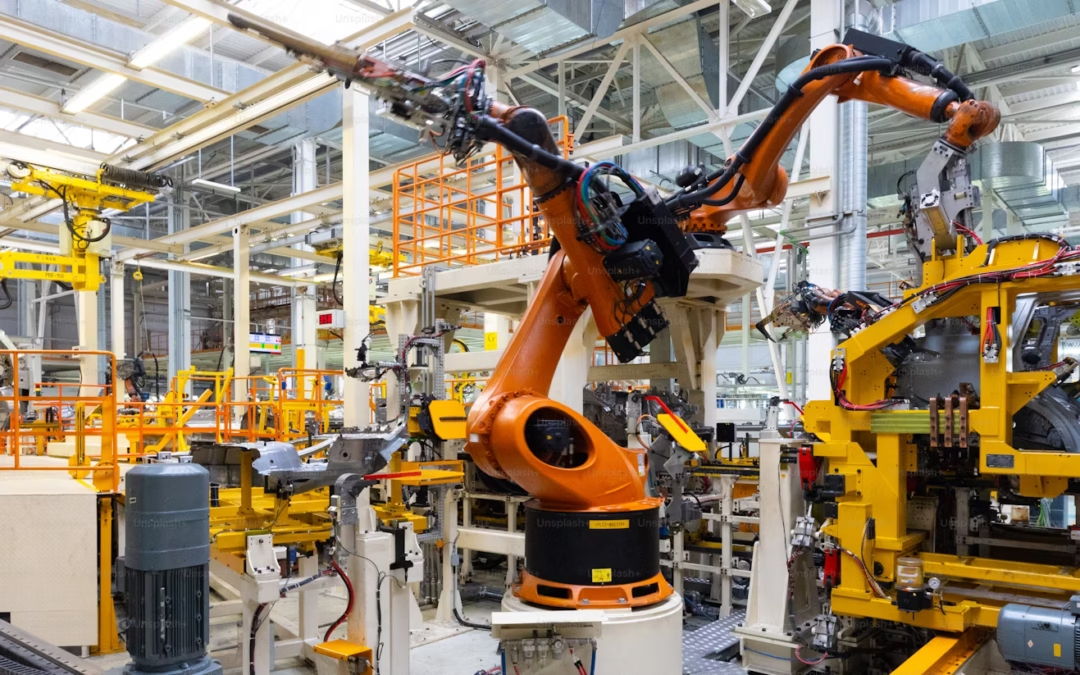Moving several tons of industrial equipment is a constant challenge in the manufacturing sector. When it comes to lifting and handling heavy loads, multiple solutions exist: overhead cranes, forklifts, automated guided vehicles (AGVs), skates, and now remote-controlled handling systems.
But which one best suits your reality? This article helps you compare the most widely used tools based on key decision-making criteria: flexibility, safety, required infrastructure, and ROI.
Key questions before choosing your handling solution
Before investing in a solution, ask yourself the following:
Common industrial handling solutions
Forklift
Forklifts are widespread in warehouses and loading docks. They are a standard solution for transporting and stacking materials indoors and outdoors.
Best suited for: Short-distance operations with light to medium loads.
However, they are limited by their load capacity (usually under 8 tons), reduced visibility, and risk of accidents in congested or sensitive areas.
- Simple to operate and quick to deploy.
- Good availability of certified operators.
- Suitable for handling loads up to 8m high.
- Indoor/outdoor use.
- Risk of tipping or collision.
- Poor visibility with oversized equipment.
- Unsuitable for heavy or bulky loads.
- Not ideal in tight or high-precision environments.
Overhead Crane
Overhead cranes are fixed systems installed in industrial buildings. They are used to move heavy equipment along fixed axes (rails or beams), primarily in metallurgy, energy, and large-scale manufacturing.
Best suited for: Heavy-duty, stable environments like foundries, steel plants, and aircraft or turbine assembly.
However, they lack flexibility and require major infrastructure and engineering work.
- Very high lifting capacity (100+ tons).
- Precise control on rails.
- Floor space remains clear.
- Long lifespan.
- Costly and time-consuming to install.
- Requires permanent infrastructure (beams, calculations, etc.).
- Inflexible; only moves along fixed rails.
- Requires trained maintenance personnel.
AGV (Automated Guided Vehicle)
AGVs are autonomous vehicles that follow pre-defined paths using laser, magnetic tape, or floor markers. They are used in warehouses and automated assembly lines.
Best suited for: Controlled, repetitive, and stable environments (e.g., logistics, electronics, pharmaceuticals).
However, they are not well suited for moving oversized or extremely heavy equipment without expensive custom engineering.
- Works autonomously, reducing labor needs.
- Streamlined material flow.
- Integration with digital systems (ERP/WMS).
- Ideal in clean, flat, obstacle-free environments.
- Load capacity often limited.
- Requires guidance infrastructure (QR codes, sensors, rails).
- Very sensitive to floor conditions.
- Expensive to install and maintain.
Remote-Controlled Solution
Remote-controlled handling systems (like Foxtrot’s solutions) combine performance, safety, and flexibility. They can be deployed quickly without permanent infrastructure and are well suited for modern, evolving industrial environments.
Best suited for: Handling 10 to 40-ton equipment in sensitive, compact, or high-precision areas.
However, they do not offer vertical lifting and require operator supervision.
- Handles 10 to 40 tons easily.
- Operator stays at a safe distance with clear visibility.
- No tracks or rails required.
- Compact and suitable for tight spaces.
- No vertical lifting.
- Indoor use only.
- Requires manual operation (not autonomous).
Why manufacturers switch to remote-controlled handling
Across HVAC, metal transformation, industrial machinery, and more, many manufacturers face the same recurring challenges.
| Common issues with traditional tools | Benefits after switching to remote-controlled handling |
| Lack of precision causes damage or downtime | Accidents reduced significantly. |
| Unsafe lifting methods in narrow areas | Faster setup for configuration changes. |
| Inflexibility in sensitive spaces | Less equipment damage thanks to precise control. |
| High time and cost to move/reorganize equipment | Better comfort and autonomy for operators. |

Comparative table of the main industrial handling and lifting solutions
| Criteria | Forklift | Overhead Crane | AGV | Foxtrot solution |
| Risk level | ❌ | ✅ | ✅ | ✅ |
| Quick installation | ✅ | ❌ | ❌ | ✅ |
| Tight space compatibility | ❌ | ❌ | ❌ | ✅ |
| Ease of maintenance | ❌ | ❌ | ❌ | ✅ |
| Without additional infrastructure | ✅ | ❌ | ❌ | ✅ |
| Ergonomics | ❌ | ✅ | ✅ | ✅ |
| Visibility when operating | ❌ | ✅ | ✅ | ✅ |
| Quick training | ✅ | ❌ | ❌ | ✅ |
| Cost | $$ | $$$ | $$$ | $$ |
Invest in safety and agility
In an industrial context where labor constraints, safety standards and pressure to optimize are increasing, it’s becoming essential to review handling methods.
Modernize your operations with flexible, safe solutions. Request a demonstration of our remote-controlled solution today.


Recent Comments